CoolSculpting in Israel
Search and Compare the Best Clinics and Doctors at the Lowest Prices for CoolSculpting in Israel
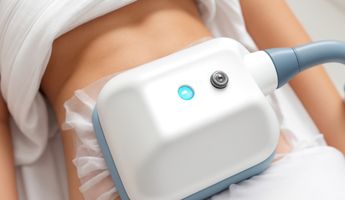
Find the best clinics for CoolSculpting in Israel
No pricing info available
Thailand offers the best prices Worldwide
Price: $ 111
From 109 verified reviews
Y N, 22 September 2020
Excellent medical center, with friendly staff and highly qualified doctors.Thank you for your work.My operation was successful
From 126 verified reviews
Y Jilani, 19 September 2020
A huge academic hospital serving the greater jerusalem area, world class health professionals and good location and amenities!
From 122 verified reviews
fadi hreaz, 27 August 2020
Hospital gives reasonable treatment but poor sorting
Tel Aviv Sourasky Medical Center (Ichilov Medical Center), can be found in Arison New Hospitalization Building, Tel Aviv, Israel and offers its patients CoolSculpting procedures as well as 428 other procedures, across 29 different procedure categories. At present, there is no pricing information for CoolSculpting procedures at Tel Aviv Sourasky Medical Center (Ichilov Medical Center). The pricing information is quite specialised, so it's only available on request. Many medical professionals work at the Clinic, with 13 in total, and Tel Aviv Sourasky Medical Center (Ichilov Medical Center) is accredited by just one known accreditations institute, JCI Accredited
- Home
- Israel
Compare Before & After Photos of _procedure_photos.phpCoolSculpting
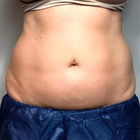
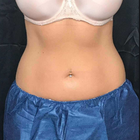
Front view
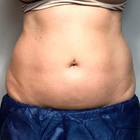
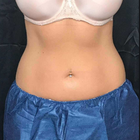
Front view
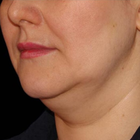
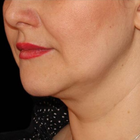
Half-side view
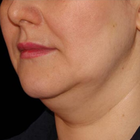
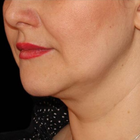
Half-side view
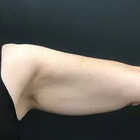
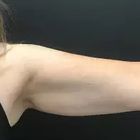
Front view
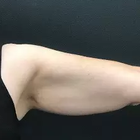
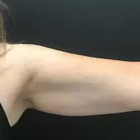
Front view
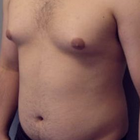
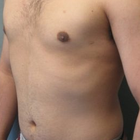
Half-side view
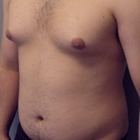
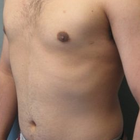
Half-side view
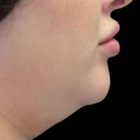
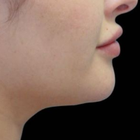
Full-side view

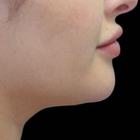
Full-side view
WHY US?
At Medijump, we're making medical easy. You can search, compare, discuss, and book your medical all in one place. We open the door to the best medical providers worldwide, saving you time and energy along the way, and it's all for FREE, no hidden fees, and no price markups guaranteed. So what are you waiting for?

Free

Best Price

Widest Selection

Risk-Free
What you need to know about CoolSculpting in Israel

CoolSculpting, also known as cryolipolysis, is a popular non-surgical fat reduction procedure that uses a form of controlled cooling to remove stubborn fat deposits that have not responded to traditional diet and exercise. It is FDA-cleared for removing fat cells from the abdomen, flanks, and thighs without surgery or downtime. In Israel, many patients opt for CoolSculpting because it allows them to resume their normal activities immediately after the procedure.
The CoolSculpting procedure essentially works by freezing unwanted fat cells, causing them to die and be naturally eliminated by the body over time. One of the notable things about the procedure is that it does not involve any cuts, anaesthesia, or significant downtime. Unlike liposuction, CoolSculpting is not a weight-loss solution, but rather a body contouring procedure, it's ideal for reducing small, localized fat bulges. So despite being a less invasive alternative, the procedure might not offer the extensive fat reduction that surgeries often deliver.
What is the cost of CoolSculpting in Israel?
When calculating the cost for a CoolSculpting procedure in Israel, remember that several aspects factor into the calculation. The final price is governed by specifics like the regions you wish to target, the number of treatment rounds you need, and the particular location. To give a ballpark figure, people often spend from "$500 through $4,000 per each treatment round". Please take note, these values serve as a guide, and the individual's specific goals and the treatment plan can alter the final cost.
Various clinics in Israel do offer provisions for financing to lighten the burden. Periodically, they might also extend promotional campaigns to offer more affordability. Even with cost being a major factor to consider, it's equally important to count in the level of expertise of the practitioner performing the procedure, along with ensuring the safety and efficacy of the treatment.
For a more defined estimate of costs that covers your personal treatment plan, we encourage you to set up a direct consultation with a CoolSculpting professional.
What does a CoolSculpting Procedure Involve?
During a CoolSculpting process, a trained professional starts by marking the specific area on your body for treatment, followed by the application of a gel pad that acts as a protective layer between your skin and the cooling panel of the device. They then use a uniquely designed applicator, functioning much like a vacuum, to gently draw your skin into its cup. This can create a feeling akin to mild pinching, tugging, or pulling. On top of that, CoolSculpting does not involve any incision, stitches, or anaesthesia.
Next, the actual cooling mechanism activates, which can cause a numbing effect on the part of your body being treated. The principle guiding CoolSculpting revolves around the controlled cooling of fat cells beneath the skin, essentially freezing them off. It's significant to highlight that while the fat cells reach the freezing point and get altered, the skin, as well as other adjacent tissues, remain unaffected. This is due to fat cells having a higher freezing temperature.
As the procedure continues, patients can stay relaxed, read, handle emails or even take a brief nap. Typically, each area's session lasts anywhere between 35-60 minutes, and this time frame varies according to the treatment area size.
How Long Should I Stay in Israel for a CoolSculpting Procedure?
Thanks to the non-invasive nature of CoolSculpting in Israel, patients are normally free to resume their usual activities directly after treatment. Every CoolSculpting session generally ranges from 35 to 60 minutes, allowing you to effectively integrate it into your day, perhaps during a lunch break, and return to your routine immediately afterward. Therefore, if you're considering travelling to Israel for the procedure, there's no need for an extended stay.
That said, depending on the number of treatment areas, your healthcare provider may suggest multiple sessions. If this is the case, you may consider a short stay of a few days in Israel for convenience and easy access to your appointments. As with any medical procedure, it's beneficial to discuss these logistics with your chosen clinic or specialist ahead of time.
What's the Recovery Time for CoolSculpting Procedures in Israel?
One of the unique attributes of CoolSculpting is that there's virtually no recovery time necessary. Unlike surgical procedures, CoolSculpting in Israel is completely non-invasive, causing minimal discomfort during and after the treatment. Patients commonly return to work, hit the gym, or carry on with their regular activities right after their appointment.
However, it's normal to experience minor side effects such as redness, swelling, bruising, or sensitivity in the treated area. These symptoms are temporary and typically resolve within a few days or weeks. Always consult with your healthcare provider for a personalized post-treatment plan. Keep in mind that results from CoolSculpting aren't immediately discernible, final results are typically visible after two to three months.
What's the Success Rate of CoolSculpting Procedures in Israel?
With a high satisfaction rate of 82%, CoolSculpting is making a positive impact in the world of non-surgical fat reduction. Isn't it impressive when people have such great experiences that they recommend it to their pals? That's the power of CoolSculpting! Research shows us that just one CoolSculpting session can knock off between 20% to 80% of fat in the treated area. While some individuals hit their body goals at one go, others might need a couple of rounds to knock out that stubborn fat. Keep in mind, however, the fruits of your CoolSculpting session take a bit of time to show - think of it like planting a seed and watching it grow. You'll start noticing changes from the fourth week, and by two months, you'll see the most striking results.
Of course, while CoolSculpting is usually safe, it's only fair to let you know about potential side effects, even though they're pretty rare. We're talking temporary aches, cramps, stinging, bruising, some skin redness, itching, and even a bit of a tingly feeling. In rarer cases, you could see an increase in fat cells, a condition known as paradoxical adipose hyperplasia.
Ultimately, we're all unique, and how our bodies respond to treatments like CoolSculpting can also be different. If you're considering CoolSculpting, having a chat with a certified provider can work wonders. They can give you the lowdown on the process, set your expectations right, and see how the treatment can help you meet your body goals.
Are there Alternatives to CoolSculpting Procedures in Israel?
Indeed, if you're contemplating non-surgical or surgical body contouring methods in Israel, you have options other than CoolSculpting. Bear in mind, that every person is unique, and alternatives should be considered based on your specific concerns, health condition and personal goals.
Among the non-surgical alternatives to CoolSculpting are:
- SculpSure: This treatment uses controlled laser technology to destroy fat cells by heating them.
- UltraShape: This method employs ultrasound technology for body contouring, reducing unwanted fat cells.
As for surgical alternatives, consider:
- Liposuction: A surgical procedure that removes fat deposits directly.
- Abdominoplasty (Tummy Tuck): This process primarily removes excess skin and fat from the abdomen and tightens the abdominal muscles.
Each of these options presents its own set of benefits and potential drawbacks. For instance, while surgical methods like liposuction and abdominoplasty often deliver more substantial results, they are more invasive and come with extended recovery periods and potential risks.
It's advisable to consult with a trusted healthcare professional to discuss these alternatives alongside CoolSculpting. Together, you can decide which option best aligns with your individual expectations and needs.
What Should You Expect Before and After the CoolSculpting Procedure?
Before the CoolSculpting procedure, your healthcare provider in Israel will conduct a thorough consultation during which they'll review your medical history and perform a physical examination. Additionally, they'll use this time to discuss your expectations, explain the process, and create a tailor-made treatment plan. On the day of the procedure, the applicator delivers precisely controlled cooling to the targeted fat cells. Patients may feel an initial sucking sensation followed by cooling, but many people read, work on laptops or even nap during the session. After the applicator is detached, the provider will briefly massage the area to break up the treated fat cells and enhance fat reduction. Post-procedure, the treated area may seem somewhat reddened, tender, swollen, or bruised, but these are temporary and expected. These side effects should subside within a few weeks. You can usually resume regular activities immediately without any recovery period.
What sort of Aftercare is Required for CoolSculpting Procedures in Israel?
Post-treatment care for CoolSculpting procedures in Israel is typically uncomplicated, mirroring a significant perk of the treatment – a zero downtime recovery. This feature allows patients to promptly return to their regular routines. However, like every medical procedure, patients could experience short-lived side effects, such as slight redness, mild swelling, some bruising or increased sensitivity in the treated area. But these are mostly temporary and recede within a few weeks. Keep in mind that individual reactions can vary and everyone's body may respond differently after treatment.
In addition to dealing with any minor side effects, aftercare emphasizes the critical role of a balanced lifestyle. Upholding a healthy diet along with regular exercise is not just vital for enhancing and sustaining the CoolSculpting results, but it also bolsters overall well-being. Remember, although CoolSculpting permanently eradicates certain fat cells, it does not prevent possible weight gain leading to expansion of the existing fat cells. Scheduled follow-up visits with your healthcare provider forms a key part of the journey, aiding in monitoring progress and ensuring proper healing. In essence, a commitment to healthy living is the cornerstone of optimal aftercare following CoolSculpting procedures in Israel.
Is the CoolSculpting procedure safe?
Absolutely, CoolSculpting by and large enjoys a reputation as a safe treatment modality. It has received the thumbs up from the FDA in the United States for its effectiveness in reducing fat in designated areas of the body. Being a non-invasive procedure, it brings down the chances of complications and risks quite significantly when contrasted with other intrusive fat-reduction methods such as liposuction.
Regardless, it's prudent to remember that even the safest of procedures could cause mild side effects. With CoolSculpting, you might experience gentle redness, sensitivity, swelling or even bruises in the area of treatment. Such occurrences are typically short-lived, receding within a few weeks.
Before the initiation of any therapeutic intervention, including CoolSculpting, it's of utmost importance to hold comprehensive discussions with your healthcare provider about any concerns or risks to make a fully informed decision.
CoolSculpting v's Liposuction
Liposuction, although highly effective, is an invasive procedure that requires small incisions for the introduction of a cannula, a thin tube used to dislodge and suction fat. Due to its surgical nature, it unavoidably leaves behind minimal scarring, though the size of these scars is typically tiny and often inconspicuous. Moreover, the procedure necessitates some form of anaesthesia, either local or general. This contributes to an extended recovery period in the subsequent weeks, during which patients may experience discomfort and temporary restrictions in physical activities.
Conversely, CoolSculpting offers a unique advantage as a non-invasive treatment. It does its work quietly in the background, destroying fat cells which are gradually expelled by the body naturally over time, resulting in nearly instantaneous recovery. Patients can return to their routine activities immediately after each treatment. However, pricing for CoolSculpting is typically per site treated, and depending on the amount of fat, an individual may need 1-3 sessions per site, which can add up. Therefore, when there are multiple areas of concern, liposuction could potentially be a more economical choice.
Remember, it's just as essential to consider the safety, effectiveness and long-term benefits of both options as it is to consider cost and recovery time factors. Always consult a healthcare provider to discuss your specific goals and find the most suitable treatment method for you.
Whilst the information presented here has been accurately sourced and verified by a medical professional for its accuracy, it is still advised to consult with your doctor before pursuing a medical treatment at one of the listed medical providers
No Time?
Tell us what you're looking for and we'll reachout to the top clinics all at once
Enquire Now

Popular Procedures in Israel
Prices Start From $120

Prices Start From $931

Prices Start From $76

Prices Start From $236

Recommended Medical Centers in Israel for CoolSculpting

- Interpreter services
- Translation service
- Religious facilities
- Medical records transfer
- Medical travel insurance
- Health insurance coordination
- TV in the room
- Safe in the room
- Phone in the room
- Private rooms for patients available

- Interpreter services
- Translation service
- Religious facilities
- Medical records transfer
- Medical travel insurance
- Health insurance coordination
- TV in the room
- Safe in the room
- Phone in the room
- Private rooms for patients available

- Interpreter services
- Translation service
- Religious facilities
- Medical records transfer
- Medical travel insurance
- Health insurance coordination
- TV in the room
- Safe in the room
- Phone in the room
- Private rooms for patients available

- Interpreter services
- Translation service
- Religious facilities
- Medical records transfer
- Medical travel insurance
- Health insurance coordination
- TV in the room
- Safe in the room
- Phone in the room
- Private rooms for patients available

- Interpreter services
- Translation service
- Religious facilities
- Medical records transfer
- Medical travel insurance
- Health insurance coordination
- TV in the room
- Safe in the room
- Phone in the room
- Private rooms for patients available

- Interpreter services
- Translation service
- Religious facilities
- Medical records transfer
- Medical travel insurance
- Health insurance coordination
- TV in the room
- Safe in the room
- Phone in the room
- Private rooms for patients available

- Interpreter services
- Translation service
- Religious facilities
- Medical records transfer
- Medical travel insurance
- Health insurance coordination
- TV in the room
- Safe in the room
- Phone in the room
- Private rooms for patients available

- Interpreter services
- Translation service
- Religious facilities
- Medical records transfer
- Medical travel insurance
- Health insurance coordination
- TV in the room
- Safe in the room
- Phone in the room
- Private rooms for patients available

- Interpreter services
- Translation service
- Religious facilities
- Medical records transfer
- Medical travel insurance
- Health insurance coordination
- TV in the room
- Safe in the room
- Phone in the room
- Private rooms for patients available

- Interpreter services
- Translation service
- Religious facilities
- Medical records transfer
- Medical travel insurance
- Health insurance coordination
- TV in the room
- Safe in the room
- Phone in the room
- Private rooms for patients available
CoolSculpting in and around Israel
About Israel
Israel celebrated 70 years of independence in 2018 - in what is a truly ancient land. The world’s only Jewish and democratic state is home to sites sacred to Judaism, Christianity, and Islam. While these holy places are truly unique attractions, there is more to Israel than religious heritage and complex politics. Jerusalem is the official capital and holy city to three world religions, previously mentioned, while Tel Aviv brims with beaches and bustles with urban vitality. Then there’s the Dead Sea and Masada, the stark, stunning Negev, and fertile Galilee. The number of museums and cultural institutions per relative area is larger in Israel than anywhere in the world.
Home to more than 30 JCI accredited facilities, medical tourists visit Israel for a variety of procedures, but particularly dental and tertiary care. CoolSculpting procedures are also a popular choice.
Popular Parts of Israel
Israel is an alluring destination for those who want to appreciate its astonishing religious sites, stunning natural beauty, and remarkable historic relics.
- Tel Aviv is the economic and technological center of Israel, with a population of over 400,000; it is the most populous city in the country. Located on the Mediterranean coastline, the city offers sunny beaches for any sun-chaser. The city has impressive architecture and has a modern cosmopolitan landscape. Tel Aviv Museum of Art houses works by international artists. In addition, it has a nonstop nightlife with a huge party option to fit every taste.
- Haifa is the country’s third-largest city and it is one of Israel’s high-technology centers as well as a busy working port. The city may have an industrious image, but with a number of museums, gardens, and shrines, it is an amazing place to travel to. The Baha’i Gardens are possibly the most popular attraction as it is the final resting place of the prophet-herald of the Baha’i Faith. Tourists can have a bird’s eye view from the platform at the top or take a free Panorama Tour.
- Eilat is located at the southernmost tip of Israel and is the only Israeli city on the Red Sea. Families come to the city to have a good time on the beach and party-goers come for its all-night parties. The turquoise waters invite visitors to snorkel, scuba dive, or swim. It is recommended to stay in an Oasis at night to get a chance to stargaze under a clear desert night sky. During the day, visit the Eilat Mountains to have a beautiful view of an ancient desert.
- Tsfat or Safed is a quaint mountain-top city surrounded by pine forests. Located at an elevation of 900 meters, the city enjoys warm summers and cold winters. It is a popular summer holiday resort frequented by Israelis and foreign visitors. Here, tourists will find synagogues, art galleries, and unique crumbling stone houses.
- Jerusalem is one of the oldest cities in the world and three major Abrahamic religions (Judaism, Islam, and Christianity) considered it a holy city. Even though it has been destroyed and rebuilt over thousands of years, the city manages to endure its spiritual magnetism. It is overflowing with holy sites, diversity, and layers of history.
Weather and Climate in Israel
Israel is a year-round destination but the temperatures in the city vary widely. The coastal areas such as Tel Aviv and Haifa experiences a typical Mediterranean climate where the winters are rainy and the summers are hot. The area around Northern Negev has a semi-arid climate with hot summers and cool winters. The Southern Negev has a desert climate with extremely hot summers and mild winters. On the other hand, mountainous regions have pleasant summer and cold winters with a little snowfall.
Generally, the winter months from November to March are the coldest months in the country. When mountainous areas such as Jerusalem receives snowfall, the coastal areas experience heavy rainfall. Summer starts in June and ends in August and it is the hottest season in every part of the country, especially in the desert area where the heat can be overbearing. The seasons of spring and autumn have the best weather, with pleasant temperatures and fewer rainy days.
Getting Around in Israel
Ben Gurion Airport is the main gateway to Israel and it is the busiest airport in the country located 20 kilometers southeast of Tel Aviv and 45 kilometers northwest of Jerusalem. The airport is ranked among the five best airports in the Middle East. It serves both domestic and international flights to and from numerous major cities around the world. There is two main passenger terminal at this airport. Terminal 1 serves domestic flights and international budget airlines such as EasyJet and Vueling, while Terminal 3 serves international flights.
Since the distance between one city to another is relatively short, getting around Israel is easy. The quickest and most convenient way is by domestic flights. The tickets are not very expensive and deals are often available online. Sometimes a one-way ticket can cost as little as 89 NIS (25 USD). Buses are also convenient but can be slow during traffic jams. Buses connecting Jerusalem, Tel Aviv, and Haifa depart very frequently. A one-way ticket from Tel Aviv to Jerusalem is around 25 NIS (7 USD). Israel’s main bus company is the Egged Bus Company. Trains are also available and very comfortable. They are a lot faster than the bus but the cost can be higher.
Taxis are widely available and can be hailed directly from the streets. Although most taxis are metered, you can agree on a fixed rate and be aware that some drivers are known to overcharge tourists, so you should insist on using the meter and make sure that it is reset to the base fare after you get in. The base fare is normally around 12.30 NIS (3.5 USD). There is also a shared taxi van known as Sherut. It is a good option to travel between Tel Aviv and Jerusalem or Tel Aviv and Haifa.
Tourist Visas in Israel
All visitors must hold a passport valid for at least six months after the date of departure from Israel. Citizens of 99 countries including the European Union, Canada, Singapore, Russia, and the United States do not require a visa to enter the country for up to 3 months. Nationals not listed on the visa exemption agreement need to obtain a visa and should contact their nearest embassy of Israel. Citizens of 25 countries require a confirmation from the Israeli government before a tourist visa is issued.
Additional Information
- Local Currency: The currency is the New Israeli Shekel (NIS) and 1 USD will get you 3.28 NIS.
- Money & Payments: ATMs that accept international cards are widespread (mostly Visa and MasterCard), except at border crossings with Egypt and Jordan. Credit cards are widely accepted and tipping is common but normally not expected.
- Local Language: The official language is Hebrew and Arabic has a special status under Israeli law as a semi-official language. Russian is spoken by around 20% of the population. Most of the population can speak English fairly well as it is required in schools and universities.
- Local Culture and Religion: More than 70% of the population follows Judaism. There are small groups of Muslims, Christian, and Druze. Muslims are the largest minority group in the country.
- Public Holidays: The country celebrates major national holidays as well as Jewish holidays such as Independence Day, Jerusalem Day, and Hanukkah.
Popular Searches
- Plastic Surgery in Thailand
- Dental Implants in Thailand
- Hair Transplant in Thailand
- Breast Augmentation Thailand
- Gastric Sleeve in Thailand
- Gender Reassignment Surgery in Thailand
- Laser Hair Removal in Bangkok
- Botox in Bangkok
- Dermatology in Bangkok
- Breast Augmentation in Bangkok
- Coolsculpting in Bangkok
- Veneers in Turkey
- Hair Transplant in Turkey
- Rhinoplasty in Turkey
- Stem Cell Therapy in Mexico
- Rhinoplasty in Mexico
- Liposuction in Mexico
- Coolsculpting in Tijuana
- Rhinoplasty in Korea
- Scar Removal in Korea
- Gastric Sleeve in Turkey
- Bone Marrow Transplant in India
- Invisalign in Malaysia
- Plastic Surgery in the Dominican Republic
- Tummy Tuck in the Dominican Republic
- Plastic and Cosmetic Surgery in Poland
- Rhinoplasty in Poland
- Hair Implant in Poland
- Dental Implants in Poland
- IVF in Turkey



